How do you make a dark living room feel brighter? 8 foolproof ways to lighter interiors
If the change of the seasons brings with it a living room that's starting to feel dark and depressing, try these designer-approved tips to make your space feel brighter
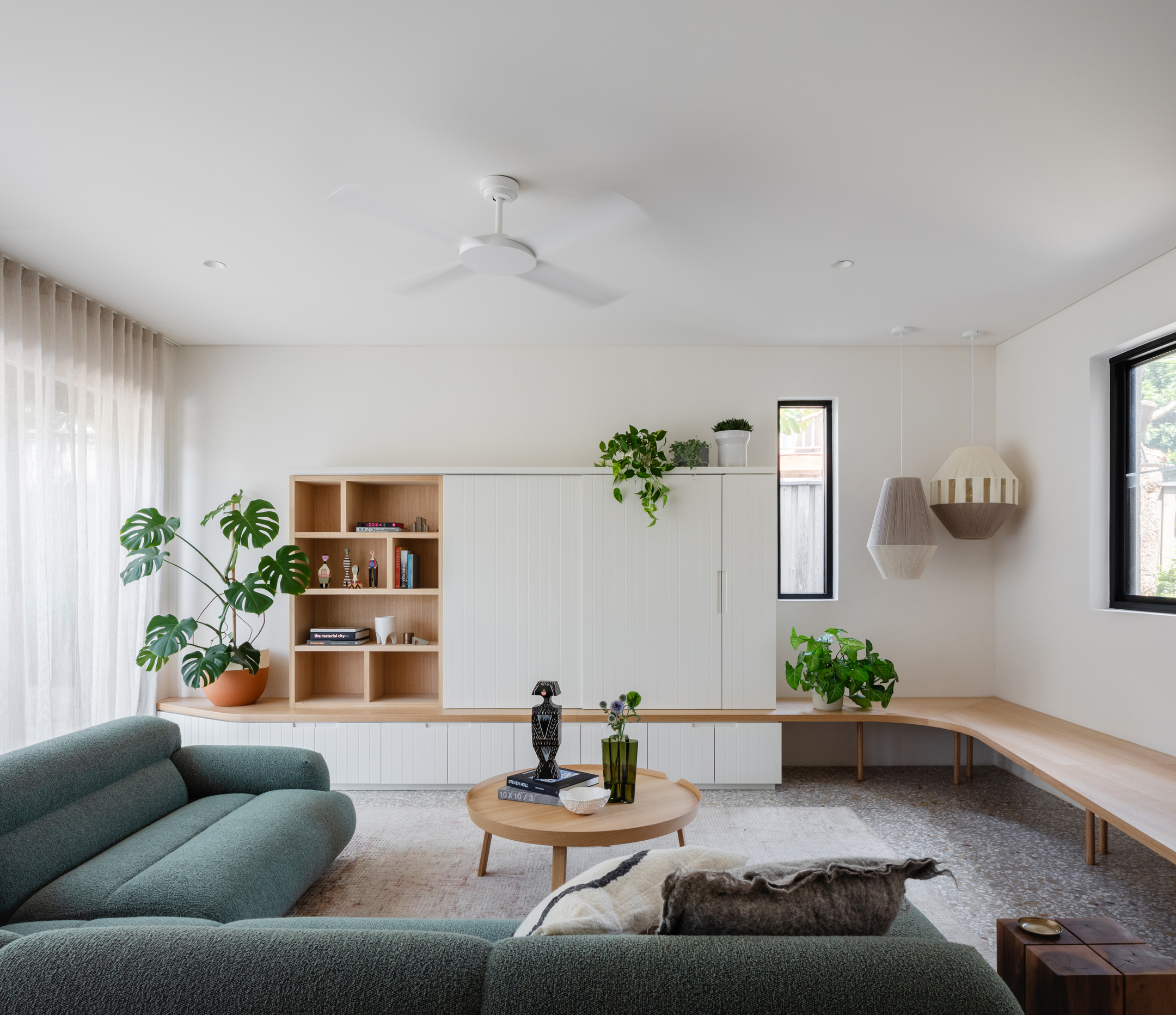

A good living room should inspire you, and no space feels more uplifting than one that's flooded with natural light. Unfortunately, that's not always the case with our homes, and whether you've got a north-facing room or small windows, a living room that's lacking in the light department can feel like a real drag.
To try and make the living room look brighter, there are a few easy but important tweaks you can make. Sure, most of us have a couple of rooms in our homes that get less light than we’d like, but that doesn't mean the room needs to be completely overhauled or redesigned. Without breaking the bank, you can maximize the amount of natural light your space does get, while also tricking the eye to help the room at least feel brighter than it is.
With the help of a few interior designers, we've pulled together some modern living room ideas that should help you get more use out of the space day and night. Just follow the light...

Aditi is a homes writer and editor with several years of experience. Her articles, backed by expert insights, offer suggestions aimed at helping readers make the best home design choices. For this article, she spoke to top interior designers and brands to understand ways in which a dark living room can be made to look brighter.
1. Opt for light neutrals over bright white
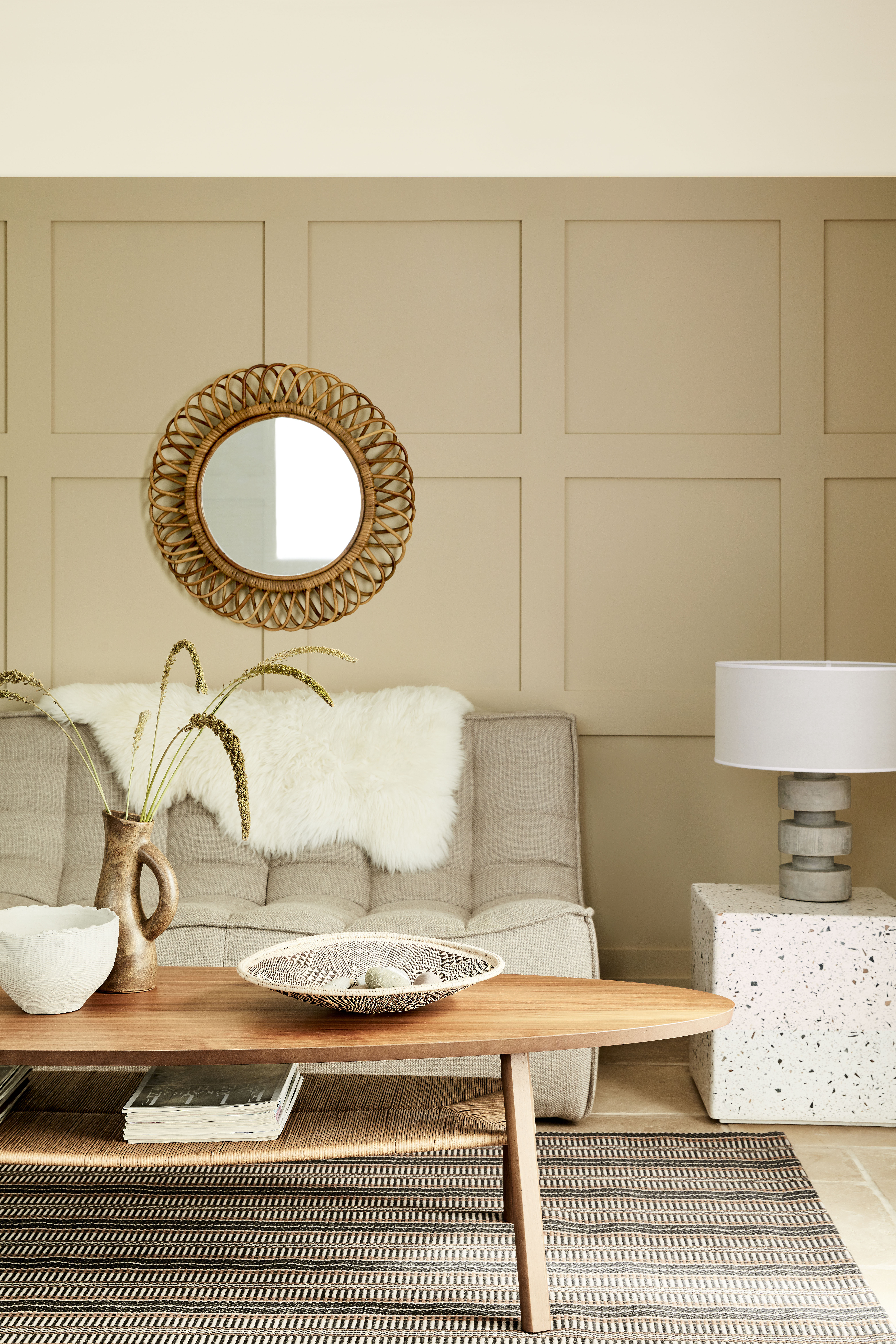
While your first instinct might be to paint the room brilliant white, there may be
a softer approach to living room paint colors while still making the room feel more airy. 'Many opt to use bright white in small or dark living rooms to make the space appear larger and brighter, however light neutrals used in a tonal scheme will have the same effect whilst not appearing too stark,' says Ruth Mottershead, creative director at Little Greene. 'If there isn’t a lot of natural light in a small living room then using lighter hues will make the room feel more spacious,' says Ruth.
2. Choose the right window dressing
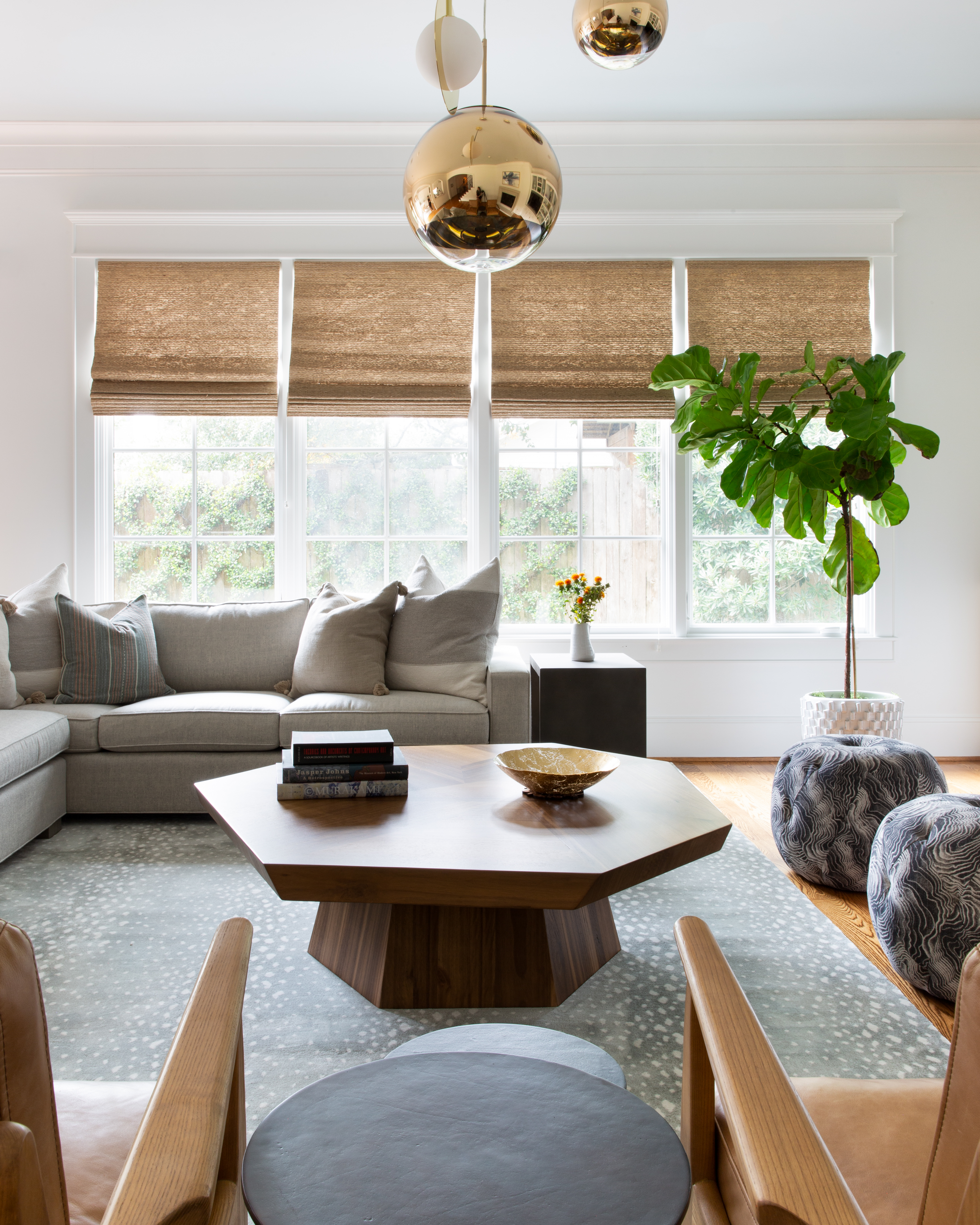
The right living room window treatments can go a long way in making the interior light, bright, and airy. To begin with, ditch the heavy curtains and blinds. Sheers, or lightweight cotton drapes at the least, do better as they can be pulled back when need be and allow filtered light to fall in during the daytime.
Consider how you mount your window treatments, too. To ensure the maximum amount of natural light enters your living room during the daytime, mount drapes and blinds so that they're not covering any of the glazing. Something to consider when measuring for blinds or considering how high to hang a curtain rod.
If you want to make sure your window is making the very most of the available light, go for window films that provide privacy but let in all the light available.
3. Create a layered lighting scheme in the room
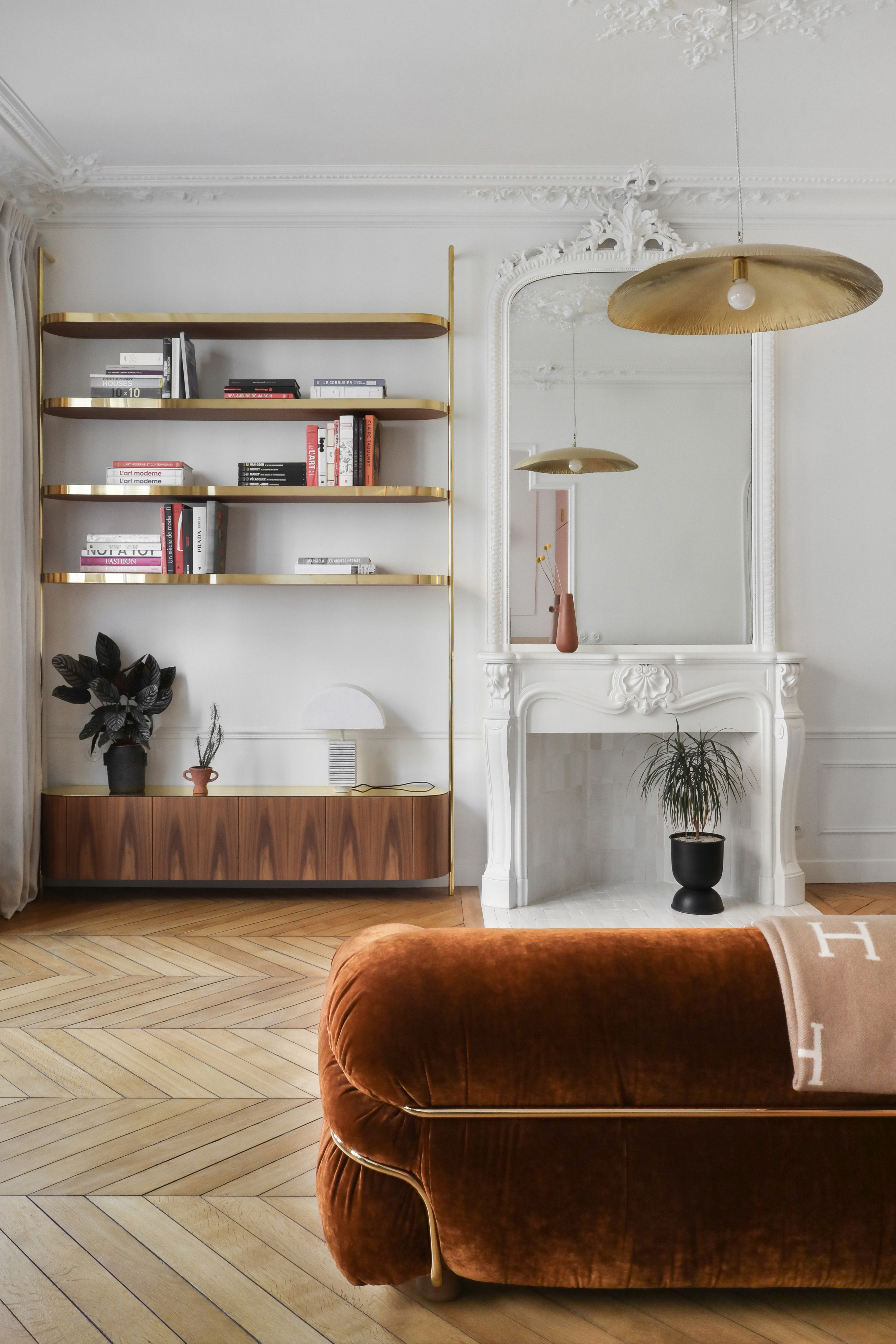
In a room with low natural light levels, effective lighting scheme is integral to your home. Invest in your artificial lighting fixtures, and bring in living room ceiling lights, and floor and table lamps to ensure the space is always bright and welcoming. Install dimmers where possible to create ambiance.
'To make the living room as bright as possible, firstly take into consideration the space you’re working with,' says David Amos, CEO at Amos Lighting + Home. 'Pendant lighting offers a great central point of light, but often won't be enough to spread light across the room. This is especially noticable where shadows are cast over walls, making the living room look significantly darker, and uninviting.'
'Wall lights are a great option, because they throw light across the wall, and balance the lighting out,' says David. 'There are also often corners or alcoves within a room which are dimmer depending on the daylight available. Table lamps offer an ideal solution to bring light into these awkward spaces, and give a warm glow to the room.'
4. Swap out accessories for colorful options
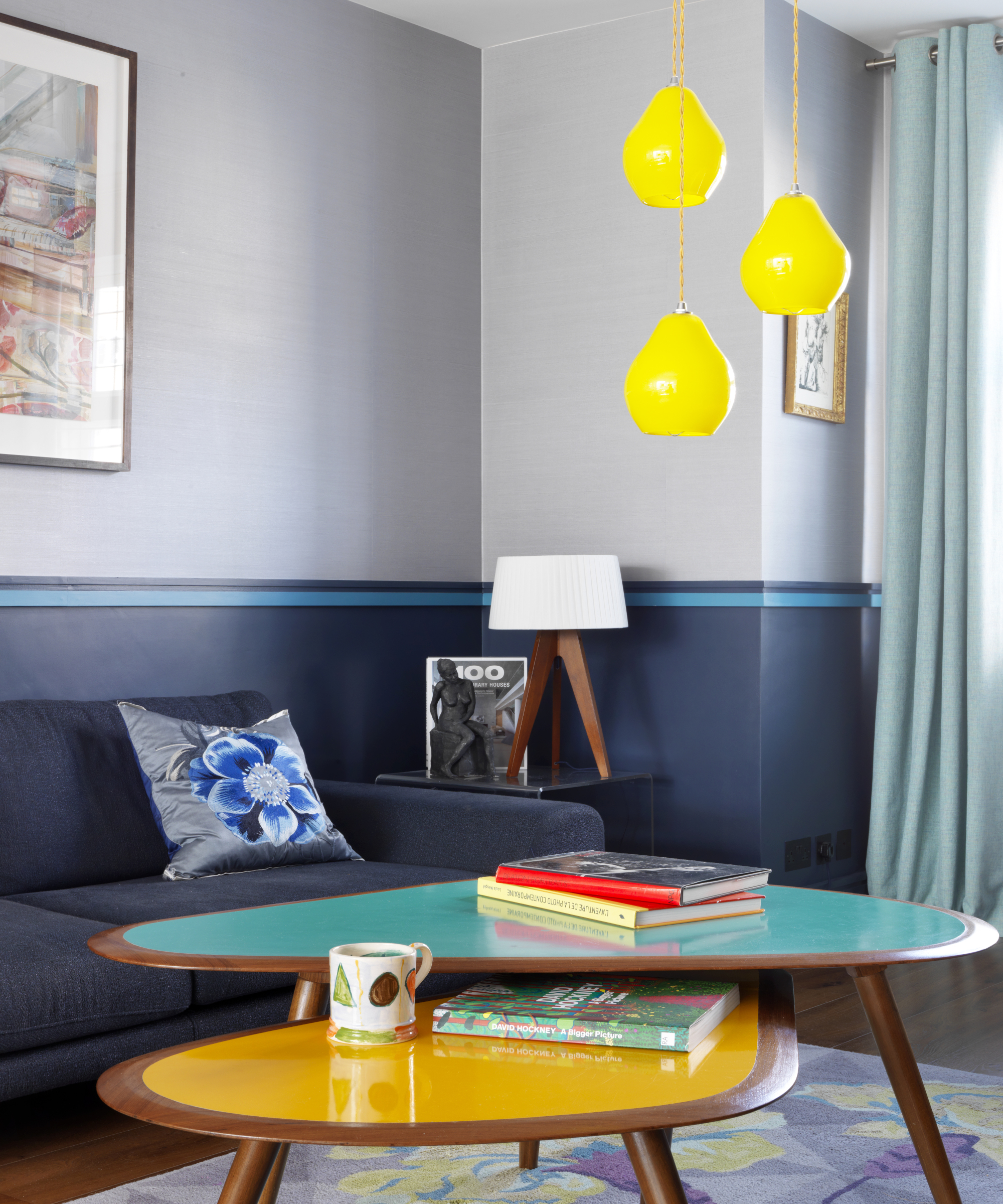
If you have a muted color scheme or decor pieces in grey, off-white or beige, chances are they may be dulling your modern living room. Color adds brightness and style in spaces that lack luster.
'I like to swap out my accessories for lighter, colorful options,' says Mel Bean, founder of Mel Bean Interiors. 'Neutral and moody coffee table books can be swapped with vibrant art books, dark textured bowls with chunks of amethyst, selenite, and translucent resin pieces.'
5. Place mirror close to light sources
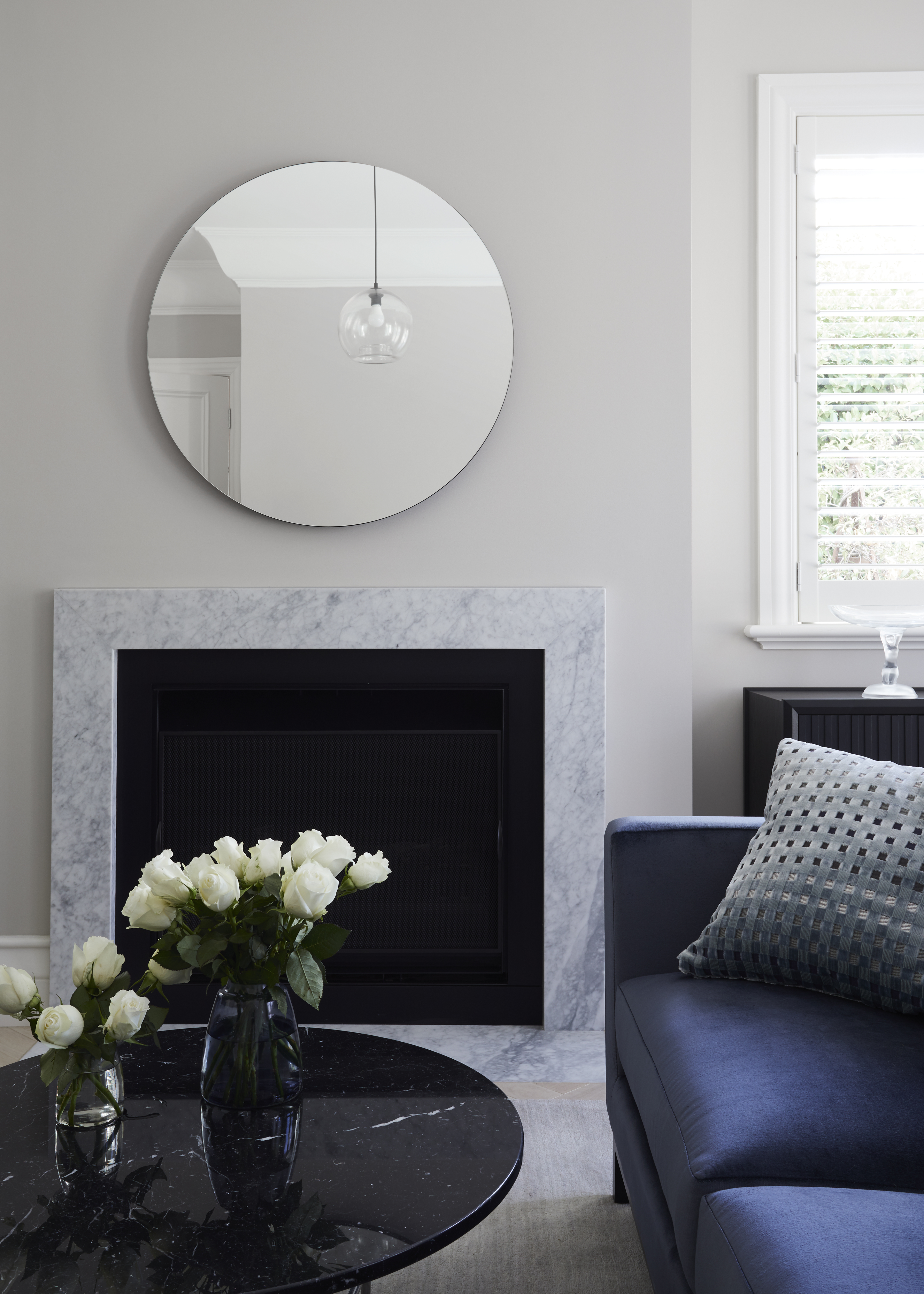
Tackle dark spots with living room mirrors. These not only increase the feeling of depth but also reflect the light, bouncing it around in the room. The key lies in pairing the right mirror with the right location to maximize its decor-and-light uplifting potential.
Ensure you place the mirror in such a way that the best views can be gathered in its reflection while making the room feel sunnier. The best thing about these little decorative wonders is that they can be placed on any wall, so you don't have to feel restricted in their use. Place a full-length mirror between two windows to trick the eye into thinking there is another window there and help maximize natural light.
'One of the most important decorative ideas for a gorgeous living room is a mirror,' says Brooklyn Brownstone designer, Jarret Yoshida. 'Most cities have apartments that are too dark or cramped so when my New York interior designer brain turns on as I enter my client's apartments, I immediately want to either reflect on the view or create an idea of space. Mirrors visually capture the ongoing drama outside or can double the sense of space.'
6. Consider high gloss paint
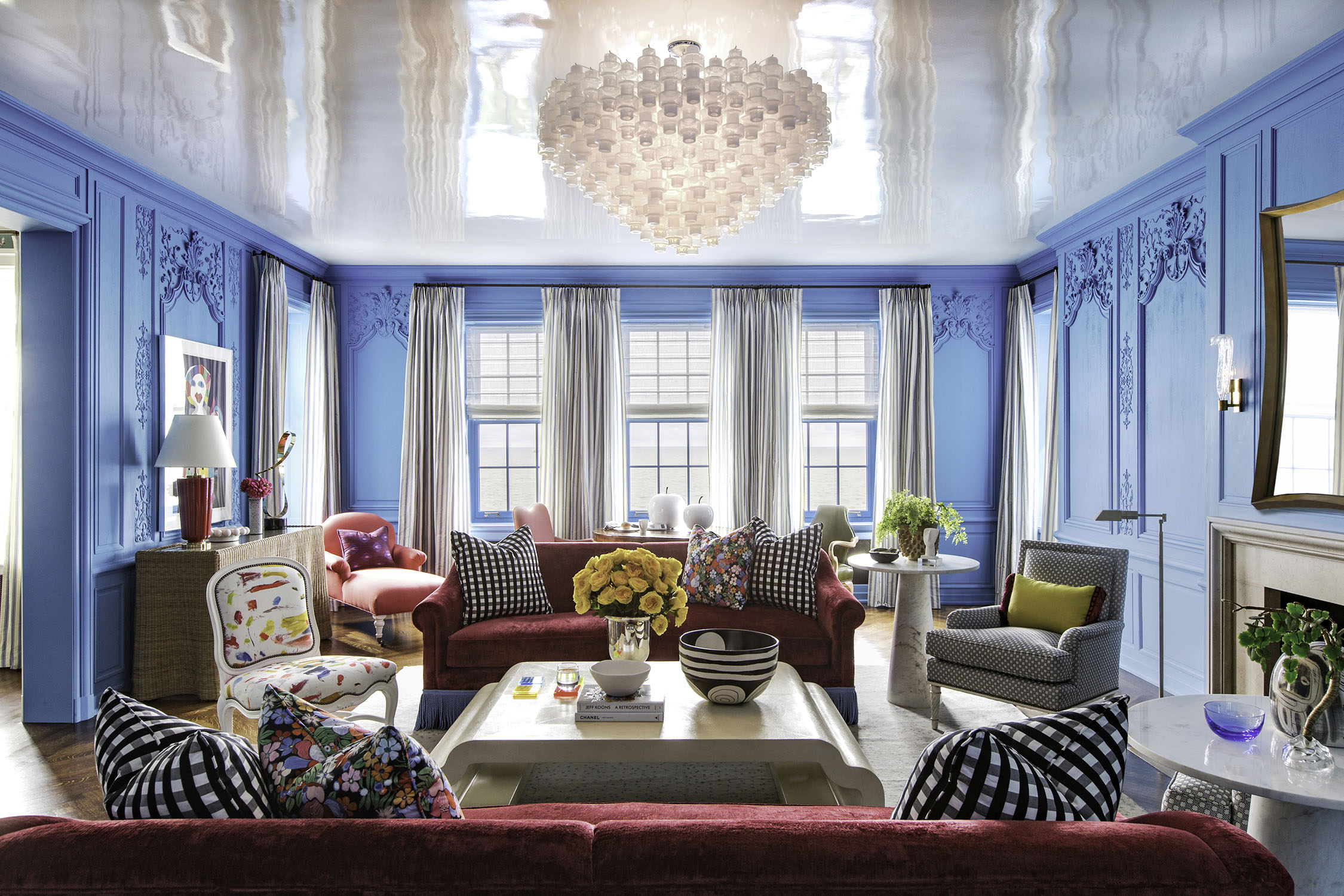
Mirrors aren’t the only light-infusing accessory you can introduce into your living room; high gloss paint too can do the job. Gloss paint finishes help create a unique atmosphere, and give interiors a bold, smart feel. They add dimension or detail to a room, and also reflect more light around. One thing to keep in mind, however, is that high gloss paint will show all the imperfections on the walls; every brushstroke, every roller mark. For a perfect shine, the surfaces must be perfectly primed. Otherwise, you can limit this paint finish to only millwork, moldings, and trims.
Alternatively, reflective wall covering can be useful too. You can increase the brightening effect even more by picking a metallic finish that will make the wall shine and reflect the light.
7. Use lightweight materials
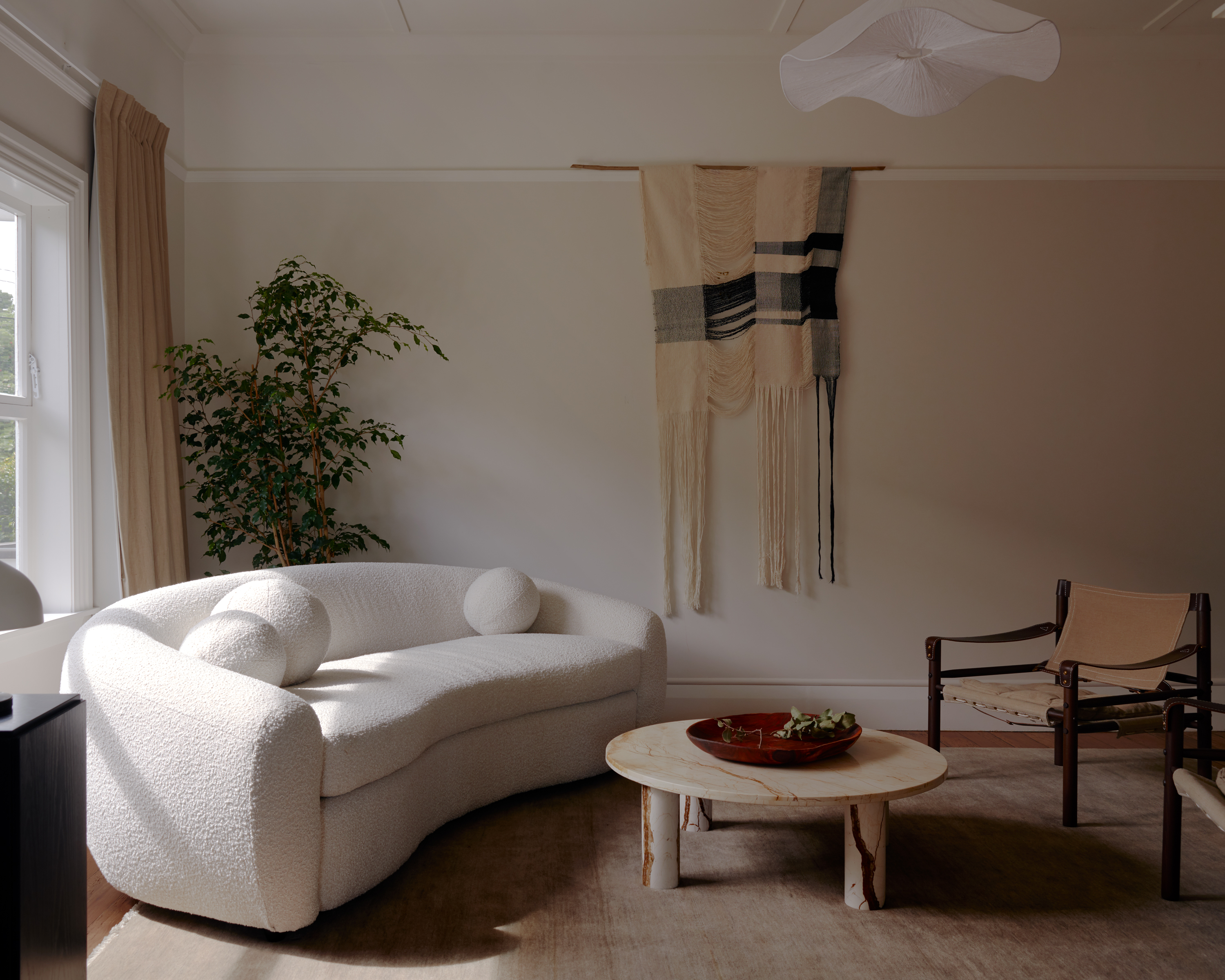
Light and soft materials like silk, cotton, fur, wool, linen, and more not only make an interior seem airy and breathable but also make a small living room look bigger. Visually heavy fabrics bring a room down, and thick curtains absorb light and make the space appear smaller.
Choose materials that are easy to clean and in lighter tones, and layer them up if need be, with vibrant accessories. Choose rugs in natural fibers that look light, and provide a soft underfoot.
8. Decorate with plants and flowers
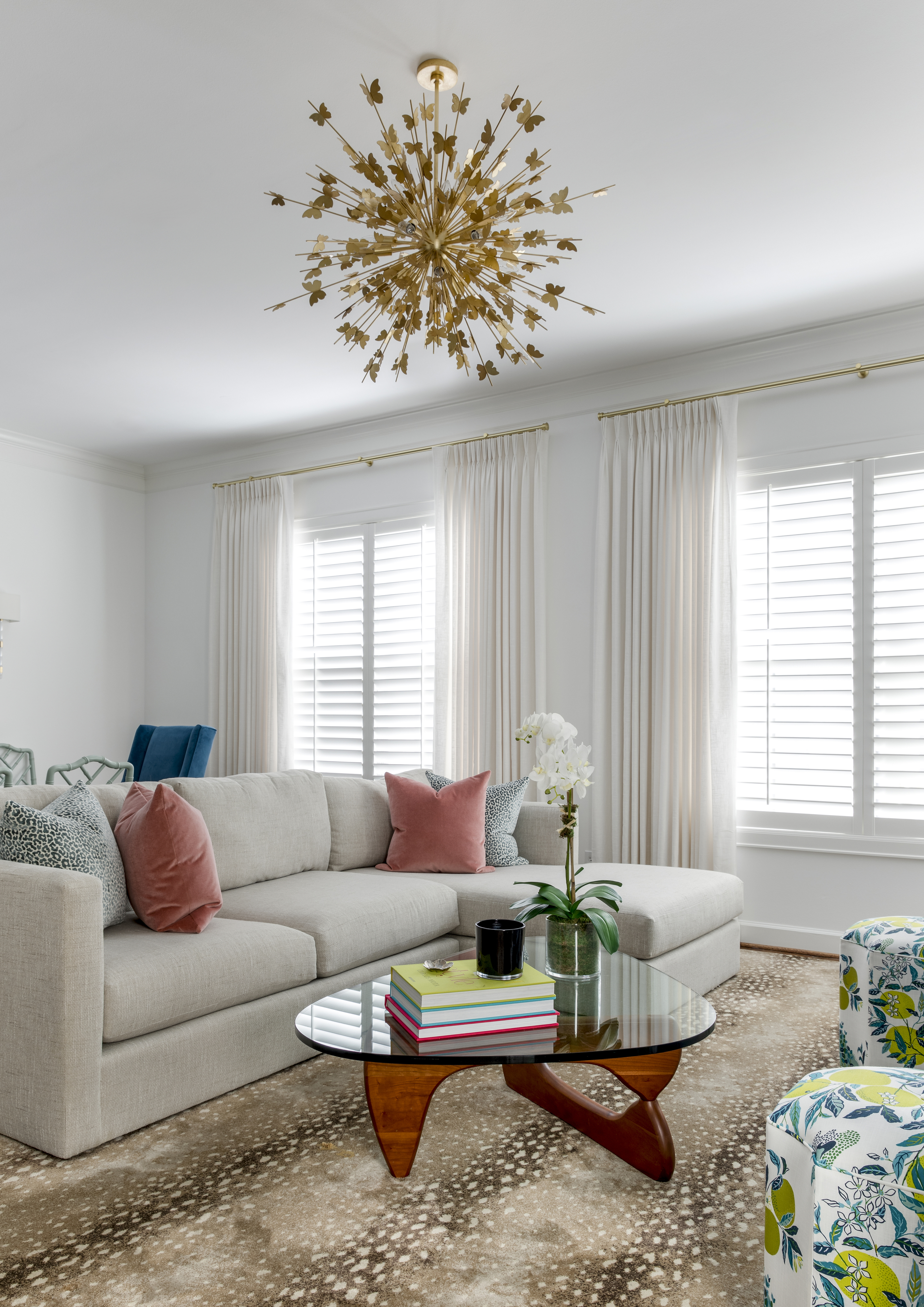
Fresh flowers and plants not only add a dose of color to a space, but also create an indoor-outdoor environment, inherently lifting the room's vibe. In a tiny, dimly-lit living room corner, consider adding a tall plant to make the nook look inviting and bright. You could also consider hanging an installation with varieties hung at different levels to create depth and balance.
Their aesthetics apart, plants can purify the air and provide a sense of tranquillity.
'I think investing in a pretty vase and making a commitment to fresh flowers is a great way to brighten your space,' says Mary Patton, founder of Mary Patton Design. 'Even if you are Insta-carting, you can have inexpensive flowers delivered from the store and it can add a whole new vibe to your interiors for the change of season. It’s affordable, too.'
What colors make a living room look brighter?
To make a room feel bigger and brighter, you need to go in for lighter, more muted tones. In terms of paints, there are several white paints for walls. Other than that, you could go in for off-white, blues, and greens.
A great paint trick is to color your wall trim and moldings in a lighter color than your walls. By doing so, the walls will appear further behind, making your living room seem even bigger.
What floor color will make my room look bigger?
If you want to make your living room seem larger, choose light-colored flooring, complimenting it with your furniture. This will visually expand the room and increase its perceived size of it. Think cream carpets, natural and neutral-toned tiles, and whitewashed wood flooring. Muted flooring makes a space feel open and airy; it also helps draw in the natural sunlight from outside.
Consider laying out diagonal or horizontal tiles to create an illusion of width. Another way to make a home appear larger is by having continuous flooring, or one flooring for all rooms. In this way, you restrict any visual breaks as viewers take a look around the house. The seamless, endless flooring makes the home seem larger than it is, optically extending its dimensions.
Be The First To Know
The Livingetc newsletters are your inside source for what’s shaping interiors now - and what’s next. Discover trend forecasts, smart style ideas, and curated shopping inspiration that brings design to life. Subscribe today and stay ahead of the curve.

Aditi Sharma Maheshwari started her career at The Address (The Times of India), a tabloid on interiors and art. She wrote profiles of Indian artists, designers, and architects, and covered inspiring houses and commercial properties. After four years, she moved to ELLE DECOR as a senior features writer, where she contributed to the magazine and website, and also worked alongside the events team on India Design ID — the brand’s 10-day, annual design show. She wrote across topics: from designer interviews, and house tours, to new product launches, shopping pages, and reviews. After three years, she was hired as the senior editor at Houzz. The website content focused on practical advice on decorating the home and making design feel more approachable. She created fresh series on budget buys, design hacks, and DIYs, all backed with expert advice. Equipped with sizable knowledge of the industry and with a good network, she moved to Architectural Digest (Conde Nast) as the digital editor. The publication's focus was on high-end design, and her content highlighted A-listers, starchitects, and high-concept products, all customized for an audience that loves and invests in luxury. After a two-year stint, she moved to the UK and was hired at Livingetc as a design editor. She now freelances for a variety of interiors publications.
-
 Turns Out the Coolest New Café is Actually In Your Kitchen — Here's How to Steal the Style of TikTok's Latest Trend
Turns Out the Coolest New Café is Actually In Your Kitchen — Here's How to Steal the Style of TikTok's Latest TrendGoodbye, over-priced lattes. Hello, home-brewed coffee with friends. TikTok's 'Home Cafe' trend brings stylish cafe culture into the comfort of your own home
By Devin Toolen Published
-
 5 Bathroom Layouts That Look Dated in 2025 — Plus the Alternatives Designers Use Instead for a More Contemporary Space
5 Bathroom Layouts That Look Dated in 2025 — Plus the Alternatives Designers Use Instead for a More Contemporary SpaceFor a bathroom that feels in line with the times, avoid these layouts and be more intentional with the placement and positioning of your features and fixtures
By Lilith Hudson Published